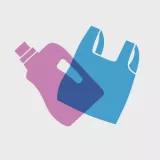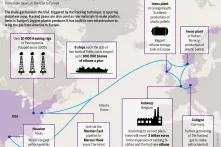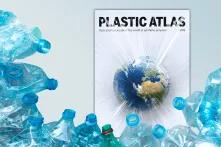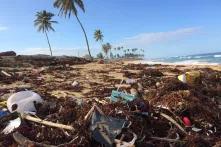Every year, approximately ten million tons of plastic waste end up in the world's ocean. An estimated total of 86 million tons of plastic has been introduced into the seas so far.
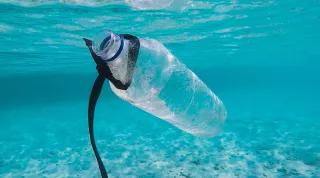
The plastic waste that ends up in our ocean comes from various sources. These include coastal tourism, maritime industries, shipping, and especially fishing. The largest concentrations of plastic gather in five enormous gyres in the Pacific, Atlantic, and Indian Ocean. The so-called Great Pacific Garbage Patch in the North Pacific alone is roughly four and a half times the size of Germany. However, only a portion of the waste ends up in these gyres. Plastic is found almost everywhere in the ocean, even in the deep sea and the Arctic. 39 percent of plastic waste floats in the open sea, although only a fraction of it on the surface. Nearly 34 percent accumulates on the seabed and coasts, while almost 27 percent floats in coastal waters.
Plastic Pollution in the Mediterranean and North Sea
But it's not just the world's ocean suffering from the plastic influx; European seas are also heavily polluted by plastic debris. Although the Mediterranean represents only one percent of the world's waters, it harbours seven percent of global microplastics. Here, the waste mainly originates from beaches, while in the North Sea, it is primarily attributed to fishing activities. A significant portion of plastic is flushed into the seas via rivers. However, the plastic input from rivers is not evenly distributed but is concentrated in ten major rivers, especially in Asia. This does not mean that only Asia is responsible for the problem because many Western industrial nations export their plastic waste to Asian countries, where it is either incinerated or ends up in the environment and ultimately in the sea.
How Plastic impacts Marine Life
Globally, over 3,000 marine species are affected by our plastic waste. Seabirds ingest plastic particles and incorporate plastic into their nests, especially remnants of fishing nets. Many become entangled or starve with full stomachs. For instance, albatrosses accumulate an amount of plastic in their stomachs throughout their lives that, in human terms, would fill an entire dinner plate. Turtles, fish, and marine mammals also get entangled in plastic bags and fishing nets, dying a painful death. Other marine creatures like fish and shellfish, which do not necessarily die from plastic, ingest microplastic and toxins through their food and seawater. Often, they end up on our plates again.
Plastic Lobby shifts Responsibility onto Consumers
The plastic industry shifts the responsibility for the plastic flood onto consumers and declares the problem as one of waste disposal. However, with the help of numerous organisations and individuals worldwide exposing and criticising the plastic madness, some momentum against the plastic lobby. So-called 'Brand Audits' sort and count plastic waste on beaches and elsewhere by brands or manufacturers, making visible the vast amounts of problematic single-use plastic these companies produce and that end up in the environment.
Urgent Need for Collective Action against Plastic Industry
In 2018, the anti-plastic network 'Break Free From Plastic' conducted 239 such audits in 42 countries. Plastic bottles from Coca-Cola accounted for the largest share of all collected plastic items, which is not surprising considering that Coca-Cola produces 88 billion plastic bottles per year. Since their brands were directly associated with plastic waste, some corporations have begun committing to voluntary goals. However, these fall far short of the measures actually needed to address the plastic crisis. Pressure on the plastic industry from consumers, civil society, and politics must continue to increase to tackle the problem at its roots.
